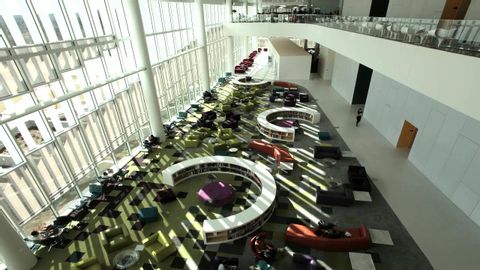
Subtitles & vocabulary
The Hunt Library Story
00
Hhart Budha posted on 2014/06/13Save
Video vocabulary
mean
US /min/
・
UK /mi:n/
- Noun (Countable/Uncountable)
- Average of a set of numbers
- A method, course of action, or instrument by which something can be accomplished.
- Verb (Transitive/Intransitive)
- To express a particular idea or thought
- To intend to do something in particular
A1TOEIC
More access
US /ˈæksɛs/
・
UK /'ækses/
- Noun (Countable/Uncountable)
- Way to enter a place, e.g. a station or stadium
- The opportunity or right to use something or to see someone.
- Transitive Verb
- To be able to use or have permission to use
A2TOEIC
More people
US /ˈpipəl/
・
UK /'pi:pl/
- Noun (Countable/Uncountable)
- Persons sharing culture, country, background, etc.
- Men, Women, Children
- Transitive Verb
- To populate; to fill with people.
A1
More state
US /stet/
・
UK /steɪt/
- Noun (Countable/Uncountable)
- Region within a country, with its own government
- Situation or condition something is in
- Adjective
- Concerning region within a country
A1TOEIC
More Use Energy
Unlock All Vocabulary
Unlock pronunciation, explanations, and filters
